
Emergency Management Podcast
Stuart Walker
The best in emergency management news, technologies and practices for experts in the field.
- 25 minutes 25 secondsCommissioner Greg Leach QFES
In this episode, we talk to Greg Leach. The interview was recorded in November 2019 just prior to Greg taking up his new post as Commissioner of Queensland Fire and Emergency Services.
Greg has worked in emergency management for over 33 years. He commenced his career with the Country Fire Authority and then moved to Ambulance Victoria and most recently served with the Metropolitan Fire Brigade.
Ask questions or share your feedback
- Comment on the show notes
- Email [email protected] (audio files welcome)
- Visit the contact page
Connect with me
- Subscribe to the Emergency Management Podcast on Apple Podcasts or Android
- Join the Facebook Page
12 February 2020, 9:46 am - 39 minutes 6 secondsVictoria State Emergency Service – David Baker
In this episode of the Emergency Management Podcast, we interview Deputy Chief Officer David Baker from the Victoria State Emergency Service (VICSES). The VICSES is the control agency for flood, storm, tsunami earthquake and landslide in Victoria (Australia).

In this episode, we discuss:
What do SES volunteers do?
The volunteers at VICSES have a range of emergency management responsibilities. Volunteers respond to natural disasters including:
- flood,
- storm,
- earthquake,
- tsunami and
- landslide.
SES volunteers also provide road rescue services.
VICSES also assist the Victoria Police in search and rescue operations.
Are all SES volunteers?
In 2018 VICSES had approximately:
- 3,547 Operational volunteers
- 910 Support Volunteers
- 80 Permanent operational staff
- 120 Permanent support staff
VicSES Values
In 2017, VICSES started a process to define its values. VICSES values include:
- We pride ourselves on our credibility
- We are part of our community
- Safety drives our decisions
- Focused and adaptable
- Together we are VICSES
VICSES Operational Capability Strategy
The aim of the Operational Capability Strategy is to explain both the rationale and the underpinning principles for the development and maintenance of operational capability of VICSES.
Emergency Services Infrastructure Authority
The aim of the Emergency Services Infrastructure Authority (ESIA) is to improve the delivery of emergency services infrastructure in Victoria. Currently, ESIA is delivering infrastructure for the Victoria State Emergency Service (VICSES), and Life Saving Victoria (LSV) built infrastructure projects and Marine Search and Rescue (MSAR) sector vessels.
We work as one
The ethos of “We work as one” is a shared goal identified by Emergency Management Victoria. “We work as one” places a priority on both government and agencies working together cooperatively to enable a flexible and networked response that supports the community.
The best piece of advice
Mark Crosweller, AFSM – “‘imagine the unimaginable’ and act accordingly” – Improving our capability to better plan for, respond to, and recover from severe-to-catastrophic level disasters by Mark Crosweller
Richard de Crespigny (Captain of QF32) – At the beginning of the Singapore/Sydney leg of flight QF32, one of four engines exploded. The damage to the aircraft was extensive.
What is the SES phone number in Victoria?
For emergencies how do you call SES?
In Victoria, you can call 132 500 for flood, storm, tsunami and earthquake emergency.
For life-threatening emergencies call Triple Zero (000).
Victoria Head Office
168 Sturt Street
Southbank, Victoria 3006Phone: (03) 9256 9000
International: +613 9256 9000Ask questions or share your feedback
- Comment on the show notes
- Email [email protected] (audio files welcome)
- Visit the contact page
Connect with me
-
- Subscribe to the Emergency Management Podcast on Apple Podcasts or Android
- Join the Facebook Page
15 November 2019, 9:23 pm - 32 minutes 19 secondsBurn Injury Prevention – Andrew Smith
In this episode of the Emergency Management Podcast, we discuss burn injury prevention with Senior Station Officer Andrew Smith from the Country Fire Authority, located in Victoria, Australia.
Here are some links that you might like to read for further information:
- The Royal Children’s Hospital – Guideline – Burns/management of burn wounds
- Trauma Victoria – Paediatric Burns Sub Guideline
- Alfred Hospital – Burns Management Guidelines
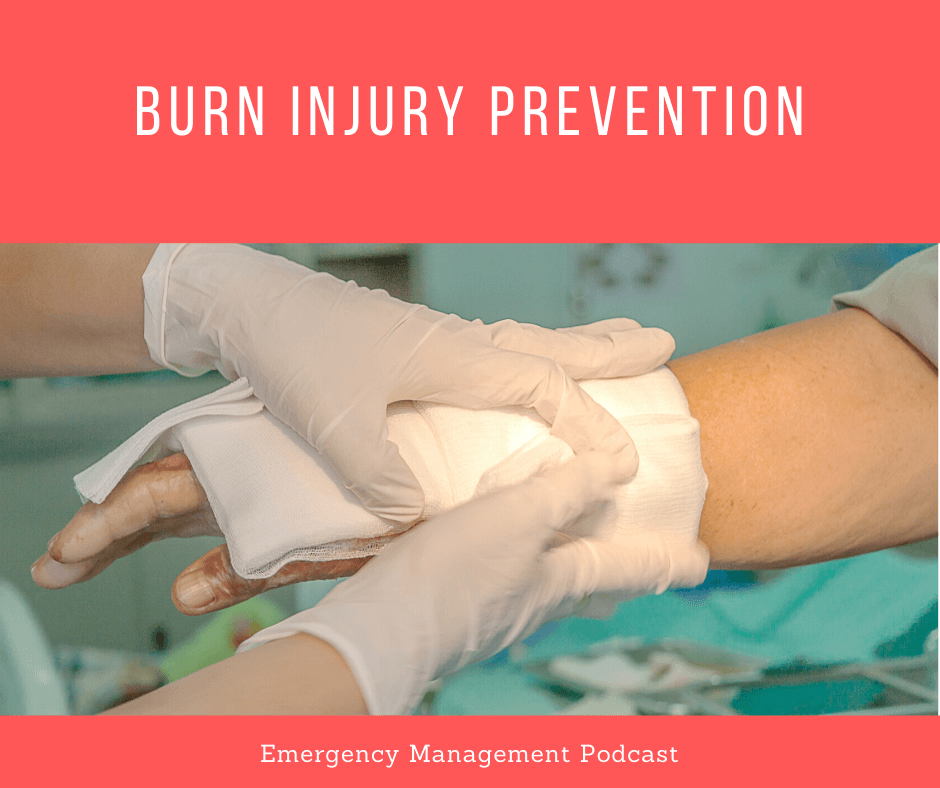
Ask questions or share your feedback
- Comment on the show notes
- Email [email protected] (audio files welcome)
- Visit the contact page
Connect with me
- Subscribe to the Emergency Management Podcast on Apple Podcasts or Android
- Join the Facebook Page
16 October 2019, 3:56 am - 30 minutes 11 secondsWhat does the American Red Cross do with data? – Brian Keenum – EMP11
What does the American Red Cross do with data?
What does the American Red Cross do with data? The answer is plenty. Indeed, data driven decision making informs their entire approach to managing emergencies.
In this episode, we talk with Senior Director of Business Infrastructure for the American Red Cross Brian Keenum, who recently provided the keynote address at the Australian Esri User Conference. During our conversation, Brian shares his organisation’s experience using world-class technology to enable more accurate, safe and effective decision making in the face of a crisis.
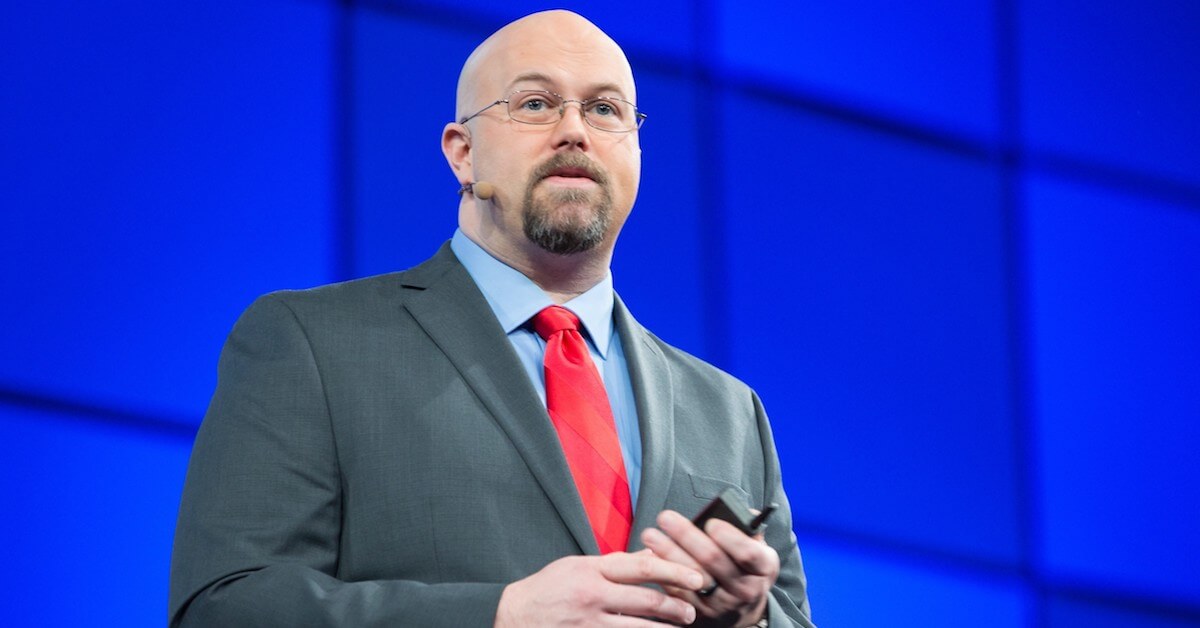 Senior Director of Business Infrastructure for the American Red Cross Brian Keenum
Senior Director of Business Infrastructure for the American Red Cross Brian Keenum
Data-Driven Decision Making Software
Data-driven decision making involves making decisions that are backed by verifiable facts rather than making decisions that are intuitive or based on observation alone.
The American Red Cross uses data-driven software to boost effective emergency management across the spectrum of prevention, response and recovery.
RC View
During the interview, Brian discusses RC View which is a custom-made application that uses that uses Esri’s GIS technology.
RC View informs the way that Red Cross responds to emergencies by:
- Providing the organisation’s volunteers and staff with real-time situational awareness
- Identifying and understanding the potential impact a crisis may bring
- Helping to inform who will be affected the worst
- Guiding the way that Red Cross should respond
- Providing the ability for Red Cross to focus their resources in real-time
RC View brings together Federal, State and local data sources into one dynamic picture that informs the decisions and actions of the Red Cross workforce. RC View has improved the efficiency of workflow during large-scale national disaster relief operations, as well as everyday response to house fires and preparedness efforts within communities.
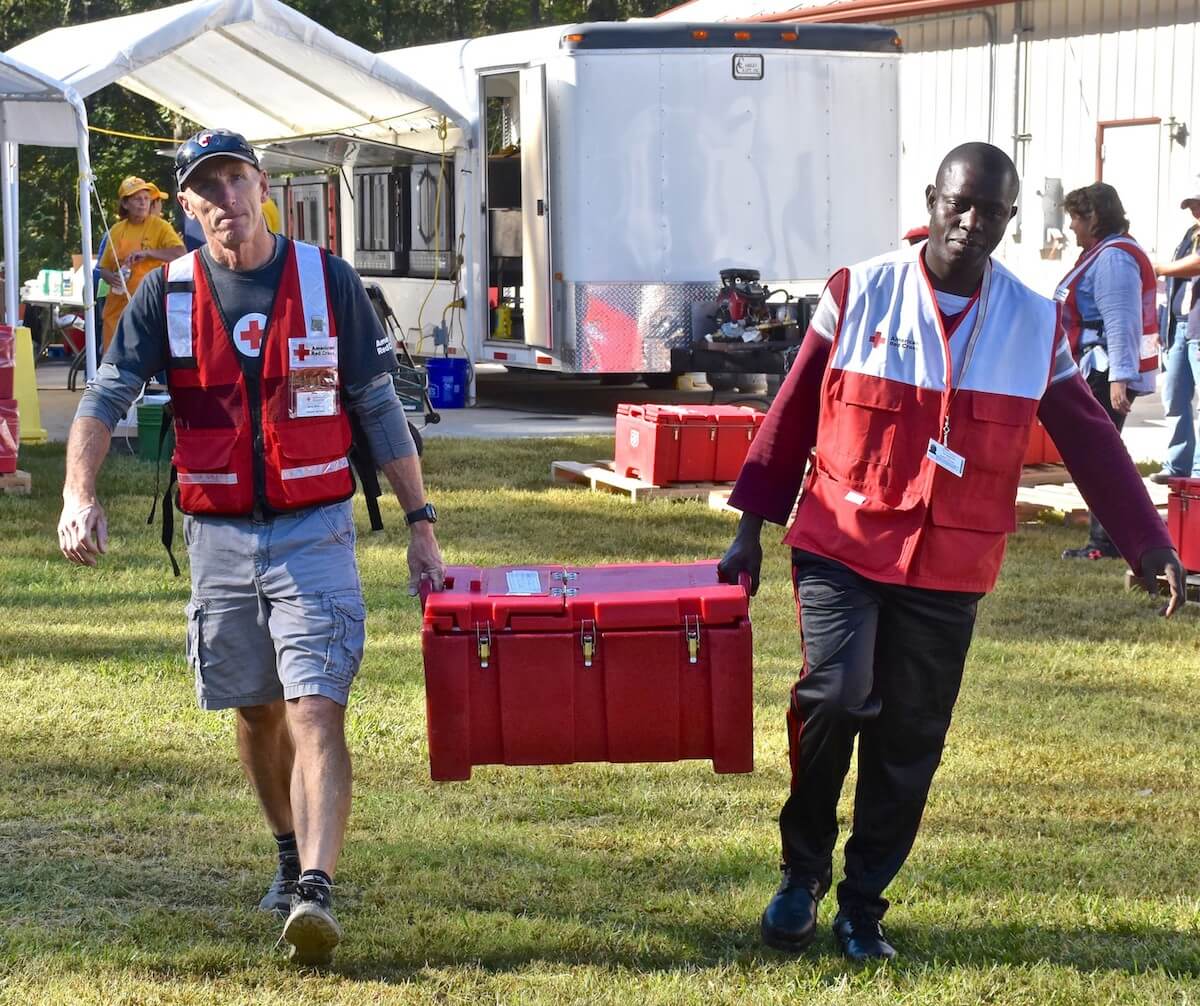
Here are some links that you might like to read/watch for further information:
- Read The GIS solution that’s changing traditional emergency response and recovery – Mark Wallace Manager, Business Development (QLD, NT & PNG)– Esri Australia, Brisbane
- Read A business case for agency interoperability during large-scale crises Mark Wallace Manager, Business Development (QLD, NT & PNG)– Esri Australia, Brisbane
- Read A best-practice open data framework – Mark Wallace Manager, Business Development (QLD, NT & PNG)– Esri Australia, Brisbane
- Watch American Red Cross – Connecting and Helping Volunteers, Partners and Citizens in Need
Ask questions or share your feedback
- Comment on the show notes
- Email [email protected] (audio files welcome)
- Visit the contact page
Connect with me
- Subscribe to the Emergency Management Podcast on Apple Podcasts or Android
- Join the Facebook Page
28 November 2018, 4:44 am - 32 minutes 6 secondsCreating order from disorder through command – Ken Brown – EMP 10
Ken Brown (AFSM) is currently the Acting Deputy Chief Officer and Acting Executive Director Operational Preparedness with the Metropolitan Fire & Emergency Services Board (MFB) located in Victoria, Australia.
His Command and Control experience is extensive and he is well known for creating mentoring opportunities for his personnel.
Ken joined the MFB in 1983. During his 35 years of service, 29 years have been spent in the officer ranks which also includes 6 years at an executive level as an Assistant Chief Fire Officer (ACFO) and acting Deputy Chief Officer (ADCO).
Ken’s substantive position is ACFO of the MFB’s Technical Operations Department. Ken is married (wife Rhonda) and has 6 children and 13 grandchildren…so far).

ADCO Ken Browns Awards and Commendations
- Australian Fire Service Medal
- National Emergency Medal
- National Medal
- MFB Long and Good Service Medal
- Chief Officer Commendation – Middle Park Fire
- Chief Officer Commendation – Hall Street Yarraville Fire
SKM Coolaroo Recycling Plant Fire
The fire at the SKM Coolaroo Recycling Plant (the Coolaroo fire) occurred on 13 July 2017 and burned for 11 days. As a result, the smoke plumes from the fire were observed across Melbourne for several days.
There were numerous challenges and nearby residents and business were urged to evacuate due to concerns about the impact of air quality on human health. The Inspector General for Emergency Management completed a post-incident analysis the fire titled: Review of SKM Coolaroo Recycling Plant Fire.
SKM Coolaroo Recycling Plant Fire Press Conference 14 July
https://youtu.be/YgZaltC0QtM
Ask your questions or share your feedback
- Comment on the show notes
- Email [email protected] (audio files welcome)
- Visit the contact page
Connect with me
- Subscribe to the Emergency Management Podcast on Apple Podcasts or Android
- Join the Facebook Page
30 September 2018, 5:59 am - 44 minutes 6 secondsNighttime Firebombing Aircraft – Wayne Rigg – EMP9
Helicopter firefighting at night
Nighttime firebombing aircraft are only a recent addition to the tools available to firefighters in Victoria, Australia. In the past, firebombing aircraft in Australia only worked during daylight hours. However, in 2018, Emergency Management Victoria led Australia’s first trial in the use of firebombing aircraft to contain and extinguish wildfires at night.
During the trial, pilots wore night-vision goggles, which are used to detect and boost light.
Do water bombers work at night?
In Victoria, water-bombing helicopters can work at night.
In this episode, Commander Wayne Rigg talks about his role to carry out an Australian first trial in the use of helicopters in nighttime firefighting. The trial was a success and resulted in approval from the Civil Aviation Safety Authority regulatory to conduct night fire suppression activities using night vision goggles.
About Wayne Rigg
Wayne joined the CFA as a volunteer at the Eildon Fire Brigade in 1994 and then became a career firefighter in 1995. He was initially stationed at Ballarat City Fire Station and was then promoted through the ranks to Commander.
 Operations Officer Wayne Rigg
Operations Officer Wayne Rigg
Wayne trained as an Air Attack Supervisor in 2005 and has been involved in aerial firebombing since. He is now considered one of the leading subject matter experts within aerial firefighting in Australia.
Wayne is also an air observer and air operations manager and performs many aviation coordination roles at Regional and State level.
Before his work with Emergency Management Victoria, Wayne held the position of CFA Aviation Officer for six years. During this time he brought about significant changes in aerial firefighting and capability. These changes have resulted in improved service delivery and protection to ground crews and communities.
Some of the projects that Wayne has been involved in include:
- Predetermined dispatch of firefighting aircraft. This means firebombing aircraft are responded to fires via an alert system at the same time as fire trucks are responded.
- Large firefighting Air Tankers.
- Airborne Information Gathering.
- Air Attack Supervisor rosters.
- Fleet changes and a range of other projects.
Ask your questions or share your feedback
- Comment on the show notes
- Email [email protected] (audio files welcome)
- Visit the contact page
Connect with me
- Subscribe to the Emergency Management Podcast on Apple Podcasts or Android
- Join the Facebook Page
9 July 2018, 2:43 pm - 35 minutes 32 secondsEmergency Medical Response & Wellbeing – Tony O’Day – EMP8
Operations Manager Tony O’Day is head of the Country Fire Authority’s (CFA) Emergency Medical Response (EMR) and Wellbeing team. In this episode, Tony explains the role of EMR and the wellbeing programs that CFA has introduced to manage the health and well-being of first responders and other CFA members.
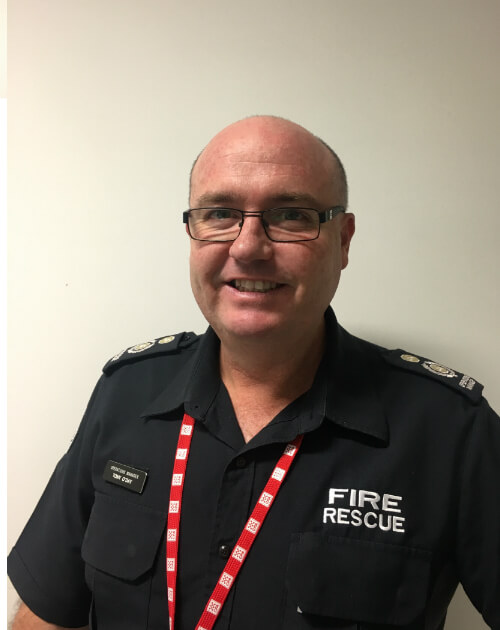 Operations Manager Tony O’Day
Operations Manager Tony O’Day
Tony has held a variety of state and field-based positions during his career, including a stint as the Victorian Fire Services Liaison Officer for Victoria Police in the Counter-Terrorism Coordination and Emergency Management Department.
What is Emergency Medical Response?
When an EMR event occurs, both Ambulance Victoria (AV) and CFA resources are dispatched to the Emergency. These emergencies are classified as Priority Zero events, which in the main involves people who are suffering potential cardiac arrest. According to CFA the “The primary aim of the EMR program is to reduce response time to cardiac arrest patients with a longer-term aim of improving survival outcomes“. EMR means that patients can get access to early CPR and early defibrillation which increases survivability.
When did Emergency Medical Response start in Victoria?
The Metropolitan Fire Brigade began EMR in 2001. CFA commenced EMR in 2008 as part of a trial involving five volunteer brigades. The program has since been extended to CFA’s Integrated brigades.
CFAs Mental Health Programs
The introduction of EMR has caused CFA to have a greater focus on managing mental health. CFA members have access to a range of mental health services including:
- Peer Program- psychological first aid (PFA) and personal support provided by trained CFA peers for personal or CFA-related issues.
- Chaplaincy Program- On-site and off-site non-denominational pastoral care support through an external provider.
- Member Assistance Program- Professional, confidential counselling through an external provider for personal or CFA-related issues.
External Mental Health Service:
- Lifeline 13 11 14 or www.lifeline.org.au
- Beyondblue 1300 22 4636 or www.beyondblue.org.au
- Black Dog Institute www.blackdoginstitute.org.au
Bystander training
CFA has recently introduced bystander training to help EMR first responders manage and assist people who may be present at an incident scene.
Ask your questions or share your feedback
- Comment on the show notes
- Email [email protected] (audio files welcome)
- Visit the contact page
Connect with me
- Subscribe to the Emergency Management Podcast on Apple Podcasts or Android
- Join the Facebook Page
6 June 2018, 6:49 am - 36 minutes 41 secondsTime critical road accident rescue – Joff Van EK – EMP7
Joff van Ek is a Station Officer with the Metropolitan Fire Brigade (MFB), and he has a passion for road accident rescue. He began his career as an operations centre officer with the South Australian Country Fire Service in 2003. Whilst in that role he had his first glimpse of emergency management, emergency call taking, appliance and firefighting aircraft dispatch. In 2007 Joff moved to Melbourne and became a firefighter with the MFB in 2007.
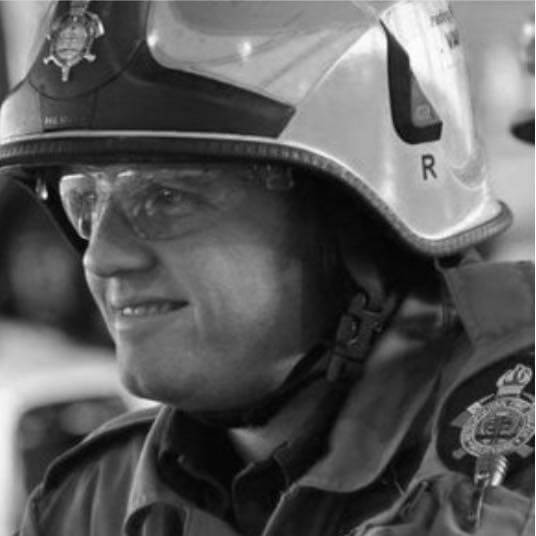 Station Officer Joff Van Ek
Station Officer Joff Van Ek
Joff is a technical assessor and trainer with the Australasian Road Rescue Organisation (ARRO). In addition, he is a guest lecturer for paramedical studies at Victoria University and practical presenter for the Holmatro Rescue experiences delivering rescue and medical training across all fire and rescue services in Australia.
In 2015/16 Joff was seconded to the Country Fire Authority. During this time he worked with CFA firefighters to promote interoperability between Victoria’s fire services. Having returned to the MFB in 2017 and promoted to Station Officer, he is now furthering his education by enrolling in the Bachelor of Emergency Management with Charles Sturt University.
Most of all Joff is passionate in promoting the work of firefighters and ensuring that they strive to maintain a high level of knowledge, training and innovation.
Emergency Foundation Scholarship – Rapid Rescue Techniques
In 2011 Joff completed an Emergency Services Foundation Scholarship studying the topic of “Rapid Extrication of time critical patients involved in vehicle accidents“. The Scholarship saw Joff research worldwide best practices for road rescue extrication. As a result, he travelled to Europe where he found many countries who are world leaders in road accident rescue innovation. During the tour, Joff visited a number of countries including Norway where he learnt about rapid extrication techniques.
 Joff Van Ek
Joff Van Ek
Connect with Joff
Joff is a moderator for the Facebook pages Extrication Matters and Fireground matters which encourage the sharing of knowledge and experience with those in the emergency management sector. You can connect with him on LinkedIn or on Instagram @therescuefireman.
Ask your questions or share your feedback
- Comment on the show notes
- Email [email protected] (audio files welcome)
- Visit the contact page
Connect with me
- Subscribe to the Emergency Management Podcast on Apple Podcasts or Android
- Join the Facebook Page
21 May 2018, 8:28 am - 39 minutes 59 secondsMentoring Leaders in Volunteer Fire Brigades – Kris Wilms – EMP6
Creating leaders in volunteer fire brigades takes time. In this episode, I talk to Senior Instructor Kris Wilms from the Country Fire Authority (CFA) about the mentoring project she developed to prepare volunteer leaders for their role.
Kris ‘s particular area of expertise is leadership and management professional development for senior volunteer leaders in CFA. Her approach is innovative and collaborative as she works alongside volunteers in the field.
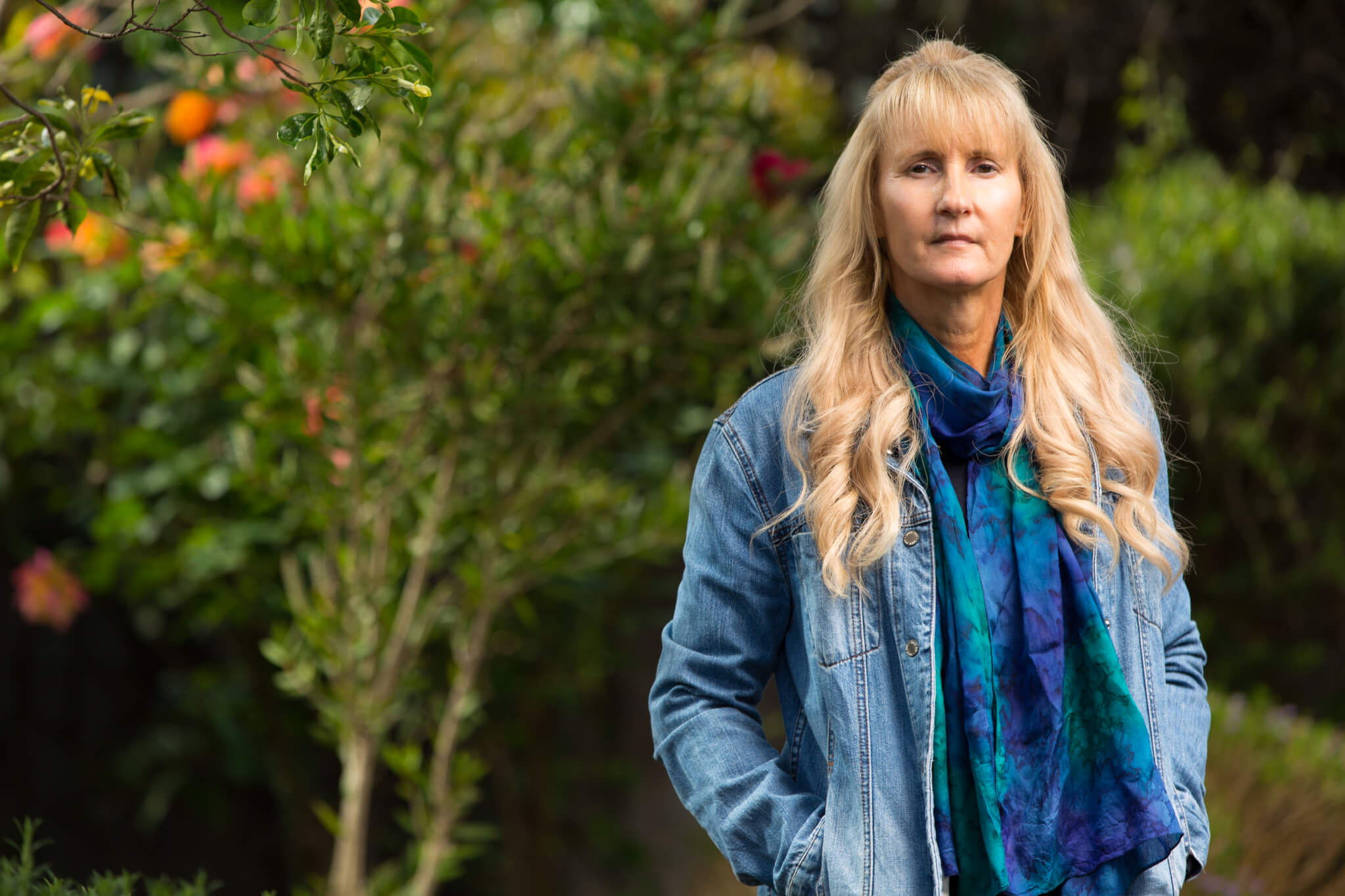 Senior Instructor Kris Wilms
Senior Instructor Kris Wilms
Kris began her career in the fire service 24 years ago. She worked as a firefighter on an army base for four years before moving to the CFA where she has worked for 20 years. As well as a range of specialist technical skills and qualifications, Kris has a Masters in Organisation Dynamics and is in the final stages of a professional Doctorate researching how Volunteer leaders can be better prepared and supported.
What is the volunteer peer mentor program?
The mentor program is developed to provide support to Captains in the broader management aspects of their role. It provides a framework to facilitate carefully considered partnerships between mentee and mentor Captains. The program requires support and involvement from the senior CFA District Operations Management team who have an inherent understanding of the many challenges Captains may face.
Creating connections
The peer mentor program aims to connect the mentor and mentee. It provides a formal structure to connect a captain to a mentee, who is someone outside their usual networks who they would not usually form a relationship.
Challenges faced by Captains
The mentor program is a professional development for Captains to discuss some of the challenges they might face including:
- Inherited & historical brigade issues
- Introducing and managing change
- People management
- Understanding the practicalities of the role
Ask your questions or share your feedback
- Comment on the show notes
- Email [email protected] (audio files welcome)
- Visit the contact page
Connect with me
- Subscribe to the Emergency Management Podcast on Apple Podcasts or on Android
- Join the Facebook Page
30 April 2018, 7:37 am - 39 minutes 8 secondsBlack Saturday bushfires asset protection – Gavin Parker – EMP5
The scale and intensity of the Black Saturday bushfires that occurred on 7 February 2009 had not occurred before in Australia’s history. During this episode, Senior Station Officer Gavin Parker from the CFA shares his experience on this day. In particular, he discusses how he and his crew worked to protect a vital communications tower.
Gavin and his crew faced many challenges during the Black Saturday bushfires. He has documented the event in a presentation and a selection of the slides are shown below. If you would like a full copy of the slides, he can be contacted via email at [email protected].
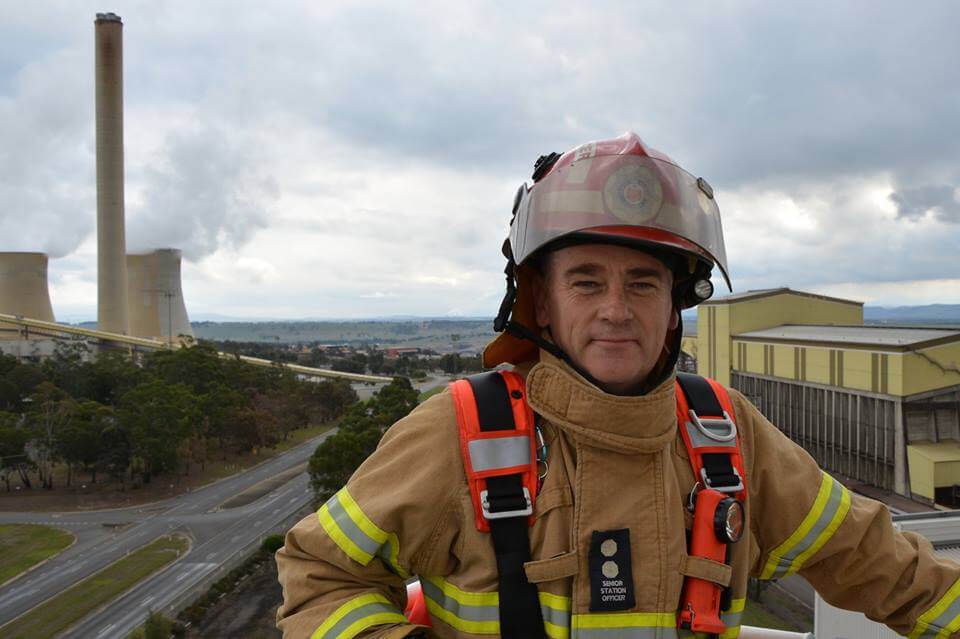 Senior Station Officer Gavin Paker
Senior Station Officer Gavin Paker
Victoria’s State Strategic Control Priorities
While they did not exist in 2009, Victoria’s State Emergency Management Priorities place particular emphasis on the protection of critical infrastructure. Indeed, the state strategic priorities which underpin the planning and operational decisions when managing the response to emergencies include the “protection of critical infrastructure and community assets that support community resilience”.
The Churchill Black Saturday bushfires
Churchill is about 160 kilometres south-east of Melbourne, Victoria, Australia. The Churchill Black Saturday bushfires started at about 13:32 on 7 February 2009, 3 kilometres south-east of the Churchill fire station.
The Call
Not long after the fire commenced Senior Station Officer Gavin Parker and his crew were responded to the fire. The red dot to the left of the image below shows the approximate location where the fire started.
 On route to the reported bushfire at Churchill.
On route to the reported bushfire at Churchill.
On Scene
Senior Station Officer Gavin Parker’s crew were the third fire truck to reach the fire. Shortly after arriving they were formed into a strike team. Strike Teams are defined as a set number of resources of the same type. They are usually made up of five resources of the same type such as vehicles, crews, earth moving machinery etc.
 Photo taken on arrival at Glendonald Road
Photo taken on arrival at Glendonald Road
Asset protection
Almost as soon as crew arrived they were tasked with asset protection. Gavin’s team was assigned to protect a communications tower circled in green below.
 Map showing communication tower location
Map showing communication tower location
Creating defendable space in bushfires
A critical aspect of ensuring crew safety and asset protection was creating a defendable space.
 Permission requested to backburn.
Permission requested to backburn.
 Tower compound after the fire
Tower compound after the fire
Preparing for the fire front to arrive
 Creating a safe area by conducting strategic burning
Creating a safe area by conducting strategic burning
 Burning out sequence
Burning out sequence
Sheltering from radiant and convective heat and monitoring for ember attack
Radiant heat is the biggest killer in bushfires. Gavin’s crew used the building to protect them from radiant heat. They continued to monitor the situation and put out fires in and around the building.
 After the fire front passes crews monitor and extinguish fires in and around the building
After the fire front passes crews monitor and extinguish fires in and around the building
 The wind change
The wind change
Ask your questions or share your feedback
- Comment on the show notes
- Email [email protected] (audio files welcome)
- Visit the contact page
Connect with me
- Subscribe to the Emergency Management Podcast on Apple Podcasts or on Android
- Join the Facebook Page
14 April 2018, 8:16 am - 47 minutes 48 secondsHide and seek? It’s no game for dogs in a disasterIn a disaster, search and rescue dogs do the work that no one else can do. Julie Cowan is the founder of Search and Rescue Dogs Australia (SARDA). Julie has been instrumental in developing canine search and rescue capability in Australia. She was a member of the consultative committee which assisted in the development of the Australian Urban Search & Rescue Canine Capability Best Practice Guideline Version 1.1 (November 2009). To say that Julie is passionate about her dogs is an understatement. Her enthusiasm for her dogs and the craft of search and rescue is truly incredible. Black Saturday Bushfire Deployment Two SARDA search dog teams were deployed following the 2009 Black Saturday bushfires. Black Saturday was one of the most catastrophic bushfires in Australia's history. The dogs from SARDA were the first dog teams in Australia to receive the National Emergency Medal. SARDA and Firefighters Train Together at Dandenong Fire Station Training for a Disaster - Selection and Accreditation The SARDA website contains comprehensive information about the Selection, Training and Accreditation for search and rescue dogs. SARDA dog teams are assessed by qualified, external assessors against international and Australian standards. These include INSARAG (International Search and Rescue Advisory Group), FEMA (Federal Emergency Management Agency, USA), and The Australian Best Practice Guidelines. Recommended reading A Strategic Framework for Volunteer Search Dogs in Australia A guide for future action Here is an excellent article from Technical Rescue Magazine on how USAR Dogs work in a disaster. Books: Thank you to SARDA's sponsors SARDA could not survive without donations and sponsorship. SARDA's key sponsors include: The Alex Fraser Group Frankston Heights Veterinary Centre Royal Canin Ask your questions or share your feedback Comment on the show notes Email [email protected] (audio files welcome) Visit the contact page Connect with me Subscribe to the Emergency Management Podcast on Apple Podcasts or on Android Join the Facebook Page28 January 2018, 12:23 am
- More Episodes? Get the App
Your feedback is valuable to us. Should you encounter any bugs, glitches, lack of functionality or other problems, please email us on [email protected] or join Moon.FM Telegram Group where you can talk directly to the dev team who are happy to answer any queries.
 Disaster Politics Podcast
Disaster Politics Podcast
 EM Weekly's Podcast
EM Weekly's Podcast
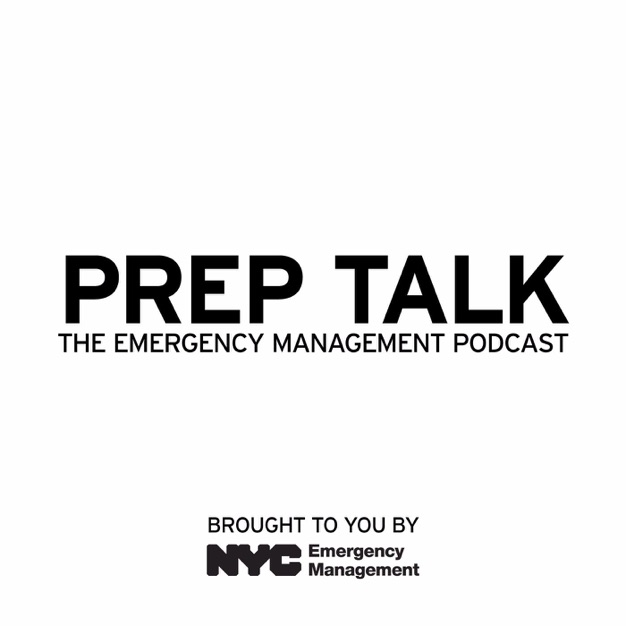 Prep Talk
Prep Talk
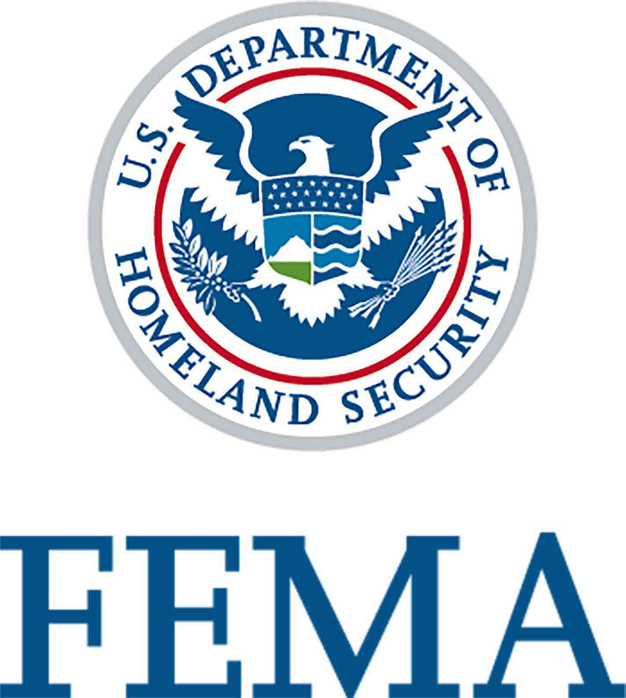 The FEMA Podcast
The FEMA Podcast
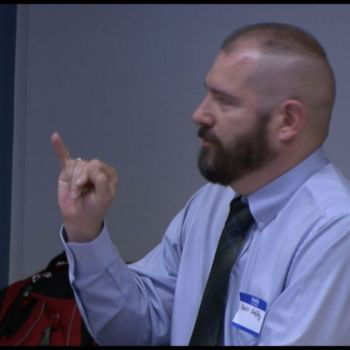 FEMA Think Tank
FEMA Think Tank
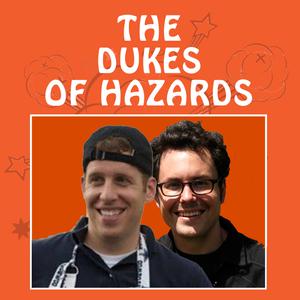 Dukes of Hazards: The Emergency Management Podcast
Dukes of Hazards: The Emergency Management Podcast